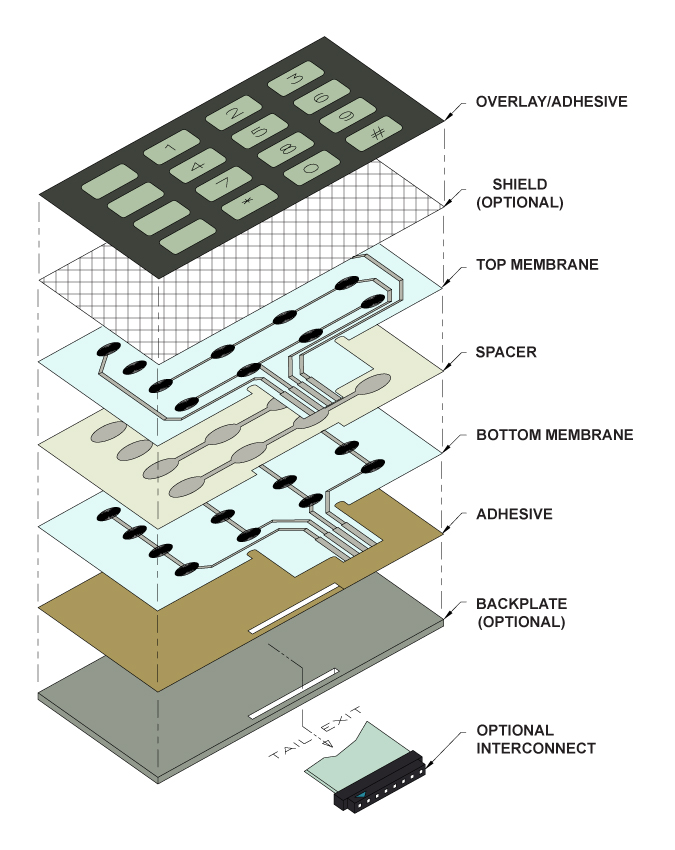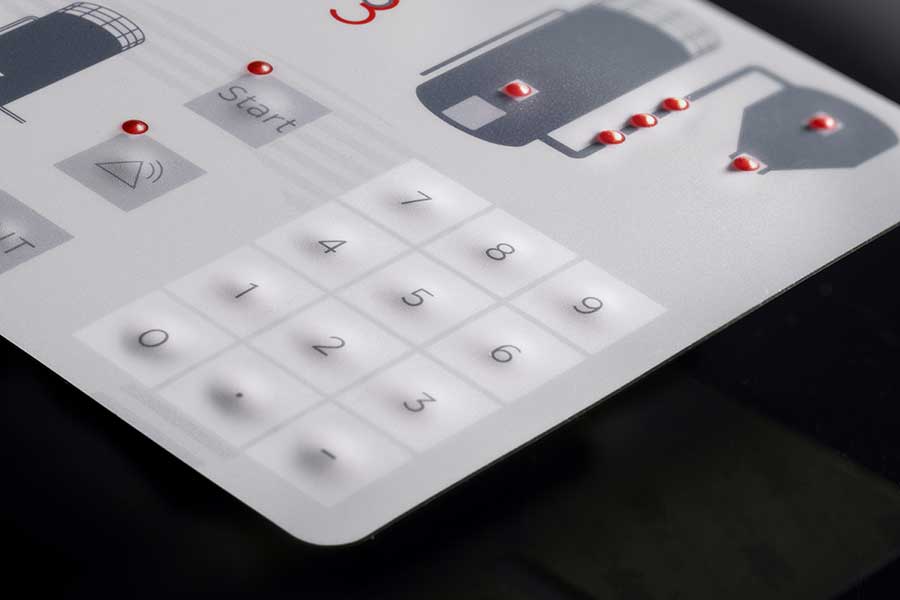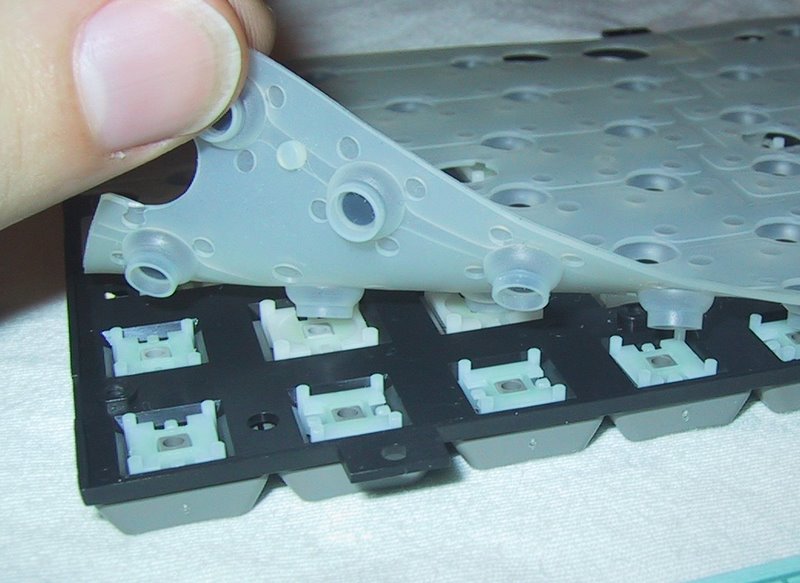How Membrane Switch Solutions Is Changing Modern User Interfaces
Membrane Change Technology: The Trick to Dependable and Cost-efficient Interfaces
Membrane switch innovation has arised as a critical part in the design of customer interfaces, providing both integrity and cost-effectiveness throughout a varied array of applications. As we explore the diverse advantages of membrane layer buttons, their capacity for technology elevates concerns about future applications and evolving patterns.
Recognizing Membrane Change Modern Technology
Membrane layer button modern technology is a widely made use of user interface remedy in different electronic devices, supplying a seamless blend of functionality and layout. This modern technology includes numerous layers of materials, usually including a graphic overlay, spacer layer, and a circuit layer. The visuals overlay displays the user interface aspects, while the spacer layer separates the circuit layer from the overlay till a customer activates a button.
When stress is related to the overlay, the circuit layer completes the electric circuit, sending out a signal to the device. This system allows for different setups, consisting of responsive comments and backlighting options, enhancing individual communication. Membrane layer switches are typically manufactured making use of resilient materials such as polyester or polycarbonate, guaranteeing durability and resistance to environmental aspects like wetness and dust.
The flexibility of membrane layer changes enables their application in diverse industries, including clinical devices, customer electronic devices, and commercial controls. Their small layout permits for combination right into space-constrained atmospheres, providing an effective customer interface without compromising visual allure. Understanding the ins and outs of membrane layer switch modern technology is vital for producers and developers seeking to create reliable and efficient human-machine interfaces.
Secret Advantages of Membrane Buttons
While different user interface solutions exist, membrane layer switches offer distinctive benefits that make them a favored option in many applications. Among the primary benefits is their toughness; membrane layer buttons are developed to stand up to extreme ecological problems, including dampness, dirt, and temperature changes, making certain durable efficiency. This durability considerably decreases the requirement for frequent substitutes, thus decreasing general maintenance prices.

Furthermore, membrane layer switches are lightweight and small, making them ideal for applications where space is restricted. Their low-profile style adds to a smooth look without compromising functionality.
Cost-effectiveness is additionally a remarkable advantage, as the production procedure for membrane layer switches over tends to be more economical contrasted to typical mechanical switches. This affordability, integrated with their reliability and convenience of setup, positions membrane layer changes as a functional option for a variety of markets seeking effective and reliable customer interfaces.
Applications Throughout Different Industries
Exactly how do membrane buttons adapt to the diverse needs of numerous industries? Membrane button technology is progressively recognized for its versatility, making it suitable for a broad array of applications across several industries.
In consumer electronic devices, membrane layer switches supply a small solution for remotes and home appliances, improving individual experience with instinctive style. Furthermore, the commercial industry leverages membrane switches for machinery control panels, benefiting from their resistance to extreme settings, such as moisture and dust.
Military and aerospace applications also use membrane buttons for their integrity and capacity to withstand severe problems, making sure functional efficiency in essential scenarios. Furthermore, the food and drink industry takes on these switches for automated systems, where sanitation visit this page and ease of procedure are paramount. Eventually, membrane layer buttons are customized to meet the special demands of each market, showing their necessary function in modern technology interfaces
Style and Personalization Choices

In the realm of membrane switch modern technology, style and personalization choices play a critical function in boosting capability and individual interaction. These switches can be customized to fulfill specific operational requirements and aesthetic preferences, making them functional elements in various applications.
One of the primary modification alternatives is the format of the button itself, which can be made to suit distinct interface and ergonomic considerations. By adjusting the form, dimension, and plan of buttons, producers can produce instinctive designs that promote convenience of usage. Furthermore, the unification of different colors and visuals overlays enables branding and enhanced visibility, guaranteeing that individuals can swiftly identify functions.
Furthermore, membrane switches can be engineered with different tactile responses devices, such as elevated buttons or audible clicks, to boost the user experience. Different products can likewise be selected for longevity and environmental resistance, attending to aspects such as dampness, temperature variations, and chemical direct exposure.
Eventually, the extensive layout and customization alternatives readily available in membrane layer button modern technology encourage organizations to create customized remedies that not just fulfill practical demands but likewise line up with their branding and functional demands.

Future Fads in Membrane Switches
As membrane layer button modern technology proceeds to advance, future patterns are progressively concentrated on improving user experience and incorporating sophisticated functionalities. One significant fad is the assimilation of touch-sensitive and capacitive innovations into conventional membrane switches. This advancement enables more user-friendly user interfaces, supplying responsive responses while keeping a streamlined design.
An additional arising fad is the usage of eco-friendly materials, driven by the growing need for lasting production techniques. Makers are seeking to reduce their carbon Discover More Here impact by making use of recyclable substratums and low-impact inks, lining up with worldwide sustainability objectives.
Moreover, the rise of the Internet of Points (IoT) find out this here is motivating the consolidation of wise features right into membrane switches. Boosted connection alternatives will certainly enable tools to interact with each various other, allowing for smooth combination right into wider systems.
In addition, developments in printing modern technologies, such as digital printing, are permitting for higher style adaptability and customization. This makes it possible for makers to create detailed styles and dynamic shades cost-effectively.

Conclusion
In verdict, membrane layer switch innovation stands for a vital innovation in individual interface layout, offering considerable advantages in sturdiness, personalization, and cost-effectiveness. As developments proceed to emerge, especially in touch-sensitive user interfaces and lasting materials, the possibility for membrane layer switches to enhance individual experience and functionality stays encouraging.